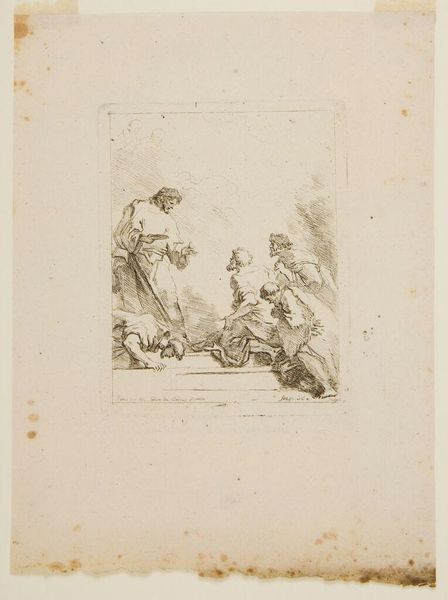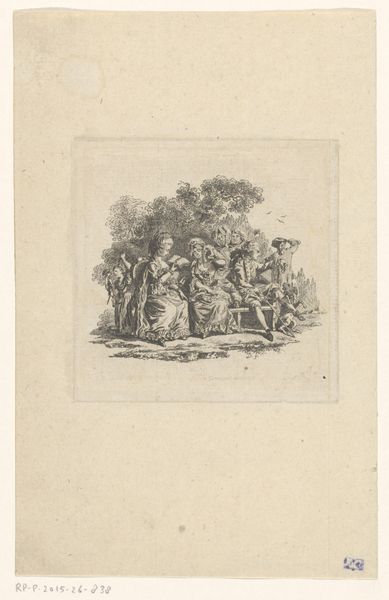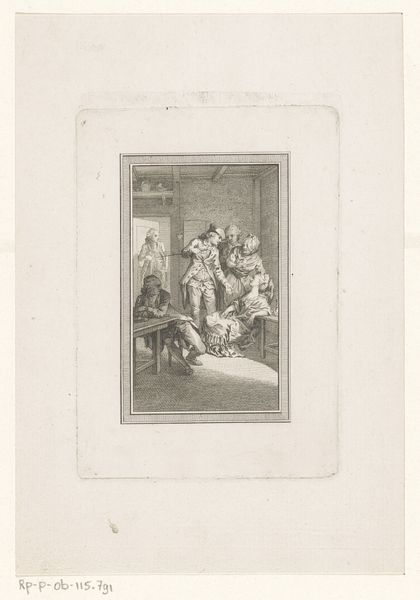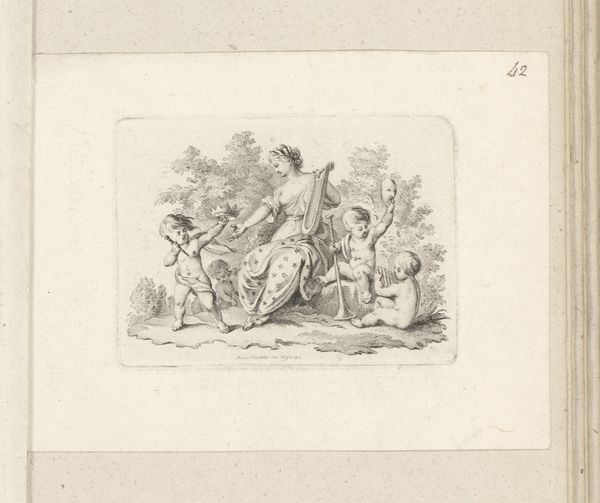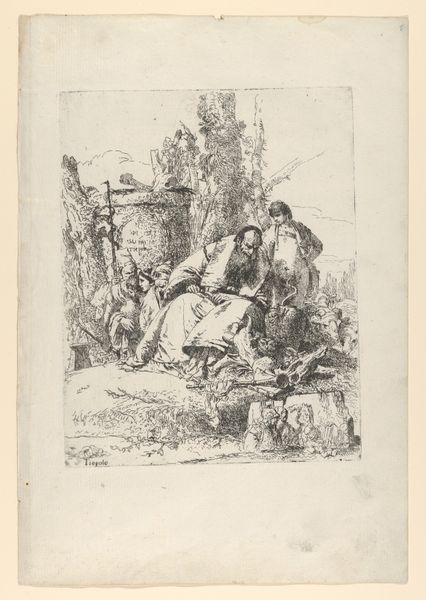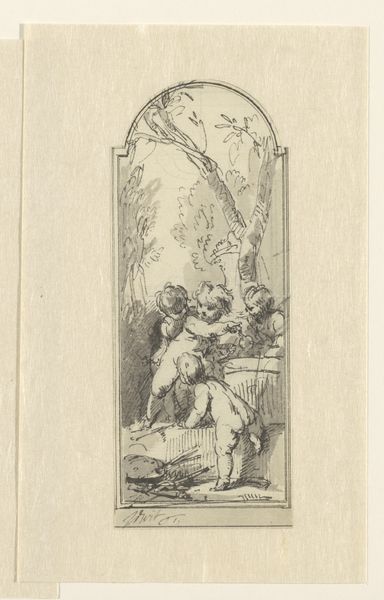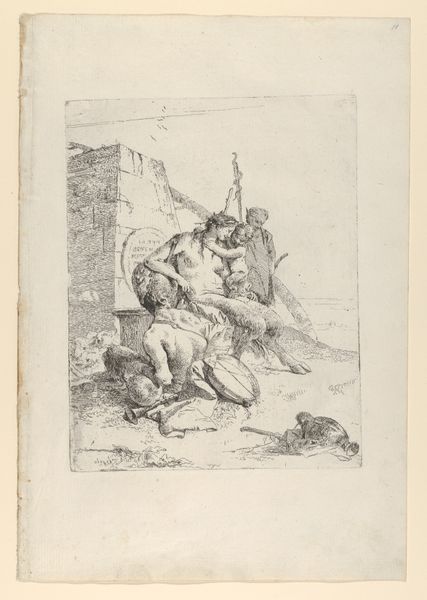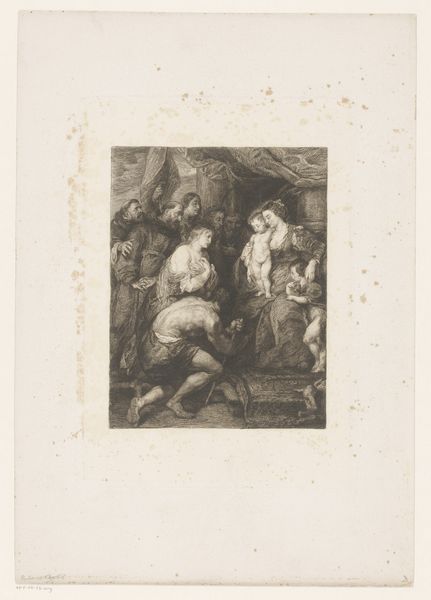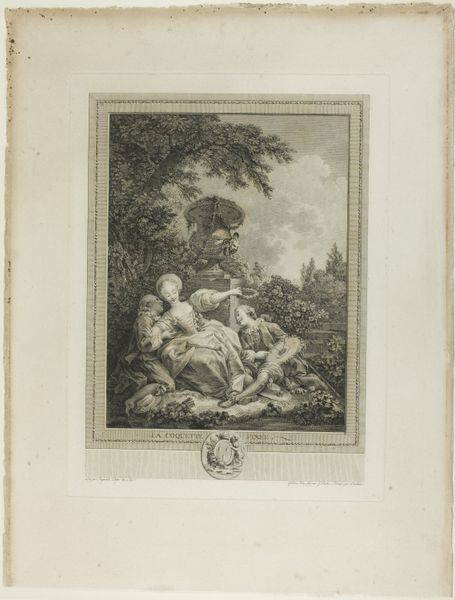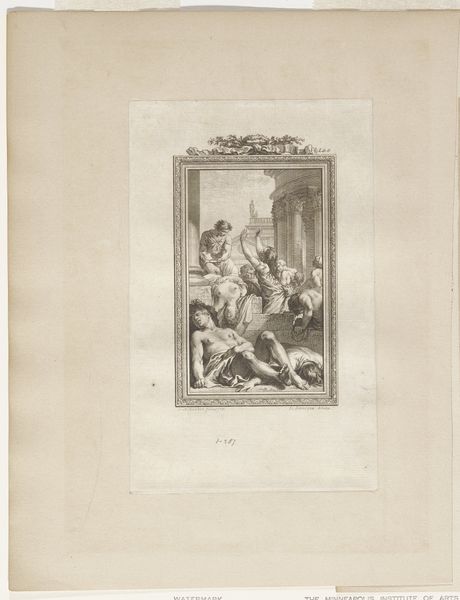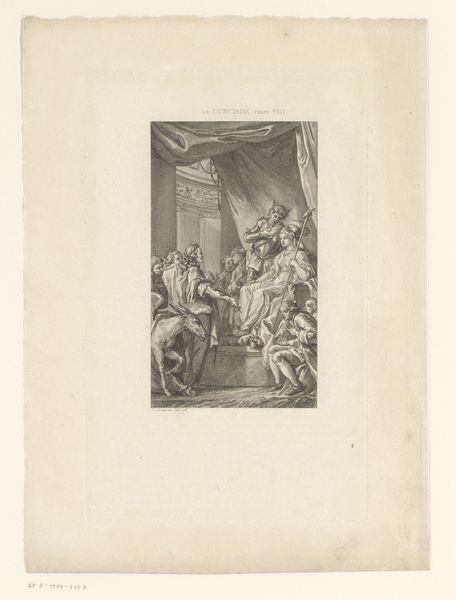
Dimensions: 107 × 88 mm (image); 120 × 96 mm (plate); 226 × 165 mm (sheet)
Copyright: Public Domain
Editor: So, this is "Institution of the Eucharist" by Jean-Honoré Fragonard, from 1764. It's an etching, so printed on paper. It has such a sense of devotion in the poses of the figures, a kind of subdued drama. What do you see in this piece? Curator: Beyond the obvious religious narrative, I see a carefully constructed power dynamic at play. Fragonard, working in a pre-revolutionary France, depicts a moment of hierarchical order, with Christ elevated both physically and spiritually. Notice how the disciples are positioned – some literally at his feet. Editor: Right, the composition definitely reinforces that hierarchy. How does that relate to the social context? Curator: Think about the role of the Church in 18th-century France. It was a powerful institution, deeply intertwined with the aristocracy. This image, while depicting a religious scene, also subtly reinforces existing power structures. Is Fragonard celebrating divine authority, or perhaps commenting on the social power that claimed divine sanction? Editor: That's interesting. I hadn’t considered the political implications so directly. The figures almost seem theatrical, like actors in a play staged for an aristocratic audience. Curator: Exactly. Now consider how gender operates within this power structure. Where are the women? This scene, while supposedly universal, reflects a very specific, patriarchal interpretation of religious authority. What impact might that have? Editor: It really silences female voices in the narrative. Thinking about it, it’s difficult to separate this "spiritual" moment from the social realities that shaped its representation. It makes you wonder who is truly served by such a depiction. Curator: Indeed. Art provides insight into cultural values, both those celebrated and those obscured. Editor: It changes how I see the piece entirely. Curator: Precisely! And now we’re having the conversation it invites.
Comments
No comments
Be the first to comment and join the conversation on the ultimate creative platform.
